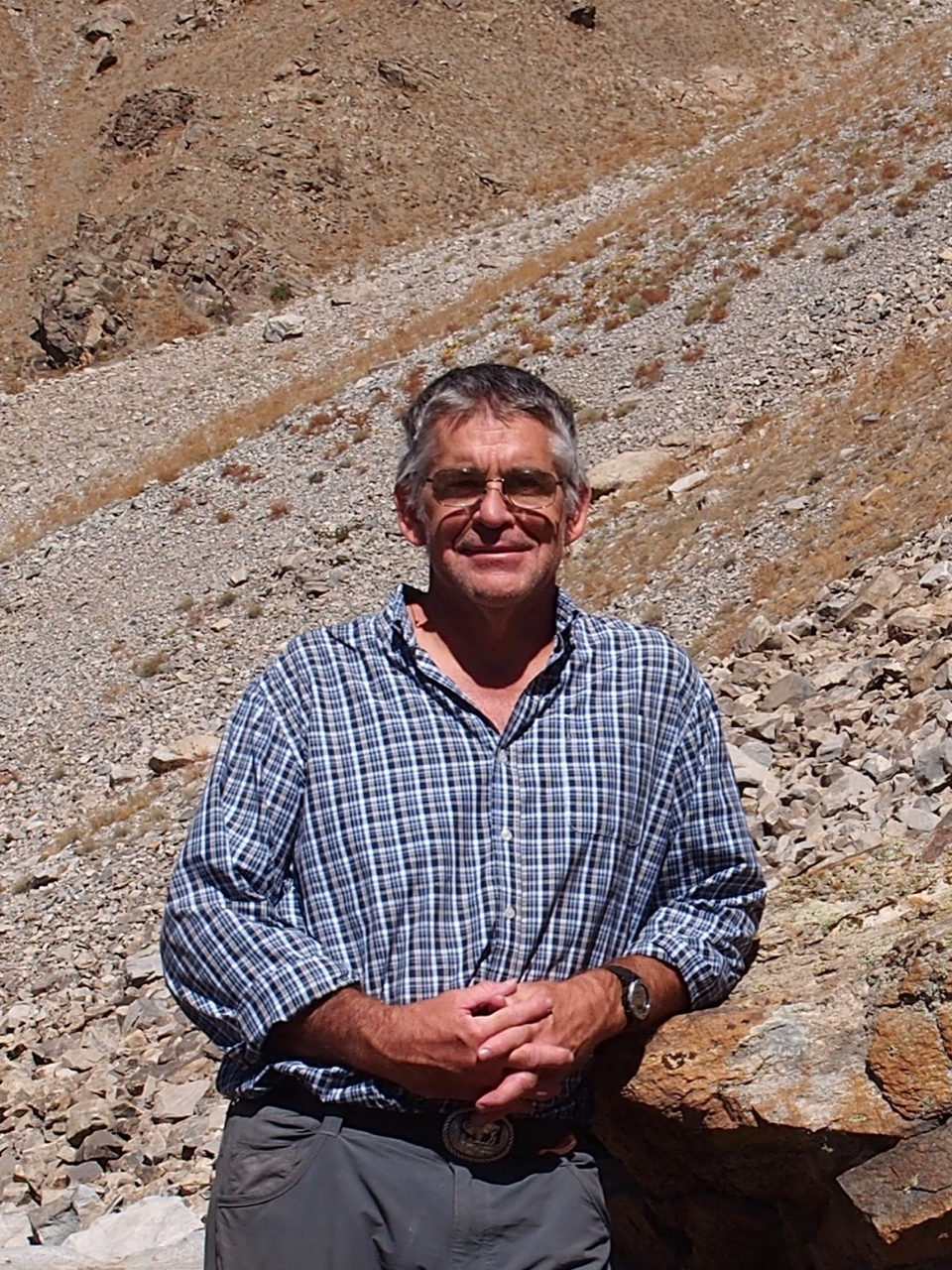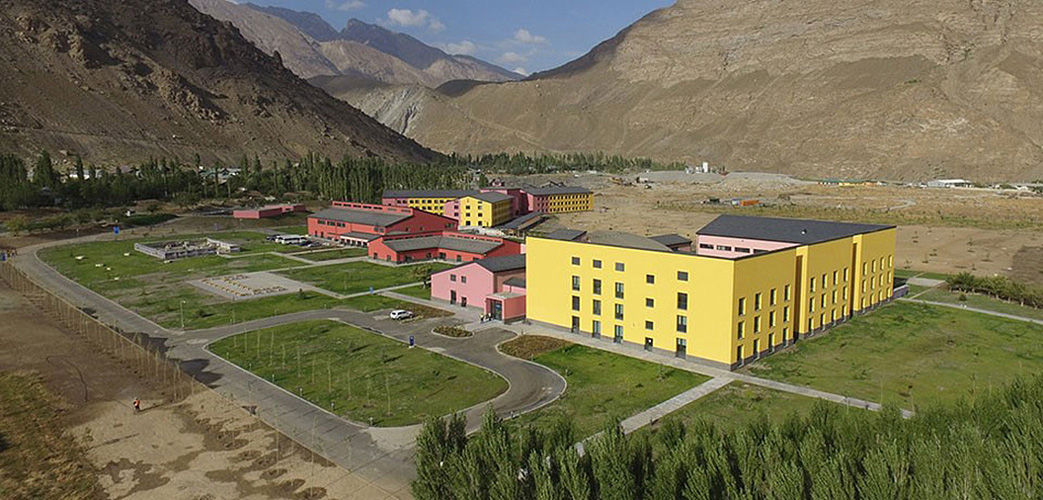David W. Rodgers, Professor Emeritus

Personal Background
Born and raised in the Midwest, educated in Minnesota and California, and settled in Idaho. Specialties are Structural Geology, Regional Tectonics, and University Administration. Now retired, I hike, camp, ski, consult, and travel extensively throughout the US and abroad.
Education
- Ph.D., 1987, Stanford University
- B.A., 1981, Carleton College
- Worked at Idaho State University from 1985-2023
Research Administration
From 2019-2023 I was ISU's Associate Vice-President for Research, helping to foster a campus-wide culture of creative and scholarly research activity. The Office for Research provides a variety of services to faculty and staff including seed grants, proposal development and submission, post-award accounting of research expenses, compliance with government and safety guidelines, improving diversity in STEM fields, community outreach, and technology transfer. It also oversees several Research Centers and Institutes. Beyond campus, I served as Associate Director of the Center for Advanced Energy Studies (CAES) which is a consortium of three Idaho universities (ISU, BSU, UI) and the Idaho National Laboratory (INL). CAES is intended to build and sustain a research collaboration ecosystem in five energy-related disciplines: nuclear energy, advanced manufacturing, innovative energy systems, energy-water nexus, and cybersecurity.
From 2013-2018, I served as the ISU Site Leader for a large research program called MILES (Managing Idaho's Landscapes for Ecosystem Services). Funded by a five-year, $20M grant from NSF through their EPSCoR program, MILES involved 100+ participants at the three Idaho research universities. Faculty, post-docs, staff members, graduate students, and undergraduate students worked collaboratively to study the past, present and future growth of mid-sized cities, especially in relation to ecosystem services such as water supply, water quality, flood control, and recreation. Our interdisciplinary research teams involved ecologists, hydrologists, sociologists, historians, geographers, political scientists, and others in order to better analyze the coupled human and natural systems in this environment. The ISU MILES project is described in more detail here, and the statewide MILES project is described here.
Fulbright Scholar Program

During the 2018-2019 academic year, I was a Fulbright Scholar at the University of Central Asia in Khorog, Tajikistan. In this role I taught science classes, developed curriculum and lab resources for the Earth & Environmental Science program, and studied firsthand the spectacular geology of the Pamir Mountains. Please visit my blog: https://rodgdavi.wixsite.com/website
During the 1994-1995 academic year, I was a Fulbright Scholar at Sultan Qaboos University in the Sultanate of Oman. Joined by my wife and two young children, I taught several courses and collaborated with university colleagues to publish this research paper on the interaction between climate and tectonics.
Academic Administration
From 2010-2018, I was Associate Dean in the ISU College of Science & Engineering. Comprising ten different disciplines, CoSE is a vibrant college characterized by quality education and significant research success. In this position, I facilitated the overall growth and improvement of the College on behalf of its 2000 students, 120 faculty, and 40 staff. Activities included student recruitment, advising, and appeals; Department Chair supervision, mentoring, and collaborative management; development and interpretation of college analytics; curriculum reform; implementation of Proactive Advising protocols; and oversight of several college programs.
Geoscience Teaching
For several decades I taught graduate and undergraduate courses in structural geology and regional tectonics. I also directed the ISU Geology Field Camp, a 5-week intensive course located in central Idaho that teaches students to describe rocks and structures and to make geologic maps. Throughout the years, I also taught Introductory Geology to convey a basic understanding of earth history, processes, and resources to students beyond the earth sciences.
Geoscience Research - Structure and Regional Tectonics
I have a wide variety of interests in both brittlely and ductilely deformed rocks, in extensional and contractional systems, and in uplift and subsidence analysis. Some common themes: all research is rooted in field-based data collection such as geologic map making and structural analysis; structural analyses are generally map- and outcrop-scale, not smaller; both tectonic histories and deformation processes are studied with more emphasis on the former; and nearly all projects are completed with the help of other specialists - geochronologists, sedimentologists, petrologists, geomorphologists, or other structural geologists. More specifically, my research interests focused on the following projects.
Structural controls on gold mineralization -
Epithermal and mesothermal mineral deposits involve fracture systems that facilitate fluid circulation and metal deposition. My students and I studied several gold deposits to characterize joint and fault geometries in relation to patterns of alteration and mineralization. Examples include an Eocene diatreme system in central Wyoming, fractured folds in Nome Alaska, a metamorphic core complex in northeastern Washington, and a tilted fault block in northeastern Nevada. Completing these studies required high-resolution geologic and alteration mapping combined with high-resolution structural analyses.
Structural evolution of the Eastern Snake River Plain -
This is a late Cenozoic bimodal magmatic province that records passage over a continental hot spot. I'm interested in extension of the province by dike injection, in the crustal plumbing of magma, and subsidence of the province through time. Several theses addressed the subsidence history by studying the shoulders of the structural depression. Another thesis focused on the geometry and kinematics of dike injection on the ESRP. Some geologic mapping, a lot of regional structural analysis, and simple flexural modeling were involved in these studies.
Structural evolution of the northeastern Basin and Range Province -
The style and geometry of the Basin and Range in Idaho is similar to that elsewhere in the western US, but the timing is apparently quite closely tied to magmatism on the adjacent ESRP. Over the years we worked to quantify the amount of extension throughout Idaho and especially to document the specific age of extension in each basin. Our goal was to determine the space-time pattern of extension, relate extension to nearby tectonism, and ultimately figure out what causes extension to occur. These type of studies involved geologic mapping, study of basin fill, and radiometric dating of volcanic rocks.
Structural evolution of the Cordilleran fold-thrust belt -
The Cretaceous Cordilleran fold-thrust belt in Idaho is called the Sevier thrust belt. Just west of the exposed thrust faults is a fairly broad region - the hinterland - that extends westward to the coeval Idaho batholith. Cretaceous deformation involved minor thrusting and a lot of folding, culminating in mylonitic shear zones along the edge of the batholith. I worked to quantify the amount and age of shortening and uplift associated with this tectonic event. Past projects re-investigated supposed thrust faults (and usually eliminated them), characterized the age and amount of uplift along the edge of the batholith, and discovered map-scale recumbent folds. Another project involved thermochronology of uplifted thrust sheets to document the age and rate of thrusting. These projects involved remapping of mountainous country, detailed structural analysis, perhaps igneous/metamorphic petrography and sampling/analysis for age dating.
Former Post-Doctoral Advisees
- Catherine Helm-Clark - Editor, Timberjay News, Ely, MN
- Mohamed Aly - InSAR analysis of ground deformation -- Associate Professor, University of Arkansas.
Former Graduate Advisees and their Current Occupations
- Kathleen Autenrieth1 - Regional Director North America Brownfields Exploration, Kinross Gold, Nevada
- Liz Balgord2 - Ph.D. (Arizona), Associate Professor, Weber State University
- Phil Bandy2 - Senior Project Manager, Excellon Resources, Boise, Idaho
- Darlene Batatian1 - Deputy Director, Utah Geological Survey, Salt Lake City, Utah
- Luke Beranek2 - Ph.D.(University of British Columbia), Associate Professor, Memorial University
- Bob Bobo2 - Environmental Geologist, Tennessee (retired)
- Brad Burton2 - Ph.D. (Wyoming), Rady Chair in Petroleum Geology, Western State Colorado University
- Tim Diedesch1 - Ph.D. (University of Tennessee - Knoxville), Lecturer, Rice University
- Duane DeVecchio 2 - Ph.D. (UC Santa Barbara), Assistant Research Professor, Arizona State University
- Doug Dvoracek 2 - Ph.D. (Georgia), Associate Research Scientist, University of Georgia (deceased)
- Dave Ettner 2 - Ph.D. (Oslo), co-owner of Geode Consult AS, Oslo, Norway
- Rudy Ganske 2 - Senior Geologist, Kennecott Utah Copper, Salt Lake City, Utah
- Darci Hanson 2 - GIS Analyst II, City of Enumclaw, Washington
- Jim Hengesh2 - Director/Principal Seismic Geologist, Interface Geohazard Consulting
- Mary Hodges2 - USGS geologist, Idaho Falls, Idaho (retired)
- Adrian Holmes1 - P.G., Principal Engineering Geologist, Shannon & Wilson, Oregon City, Oregon
- Brian Hough1 - Ph.D. (University of Rochester), Assistant Professor, SUNY-Oswego (deceased)
- Audrey Huerta1 - Ph.D. (MIT), Associate Professor, Central Washington University
- Gina Iwahashi 2 - Reno, Nevada
- Brad Johnson2 - Ph.D. (University North Carolina), Associate Professor, Davidson College
- Eric Johnson2 - Departmental Analyst, State of Michigan
- R.J. Johnson2 - P.G., owner of RJ Johnson, Geosciences Consulting, Las Vegas, Nevada (retired)
- Brennan Jordan1 - Ph.D. (Oregon State University), Professor, University South Dakota
- Joshua Keeley2 - Geologist, New Hampshire Geological Survey
- Sean Long1 - Ph.D. (Princeton University), Associate Professor, Washington State University
- Brian Mahoney 2 - Ph.D. (British Columbia), Professor, University of Wisconsin-Eau Claire (retired); Owner/Operator of Precision GeoSolutions
- Paul Malan 1 - Geologist, Newmont Mining, Elko, Nevada
- Nadine McQuarrie 1 - Ph.D. (University of Arizona), Professor, University of Pittsburgh
- Milana Michalek 1 - Senior Staff Geologist, Associated Earth Sciences, Auburn, Washington
- Dan Narsavage 2 - Senior GIS Analyst, Idaho Department Water Resources
- J.P. O'Brien 2 - Environmental Geologist, Colorado
- Shannon Osterhout 2 – Petroleum Geologist, Weatherford, TX
- Suzette Payne 2 - Ph.D. (University of Idaho), Seismologist, Idaho National Laboratory, Idaho
- Cody Pink 1 - Owner of Piton Exploration, Alaska
- Arron Pope 2 - Technical Lead, Bay West LLC, Richland, WA
- Sean Polun 1 - Ph.D (University of Missouri), Postdoctoral Fellow, Missouri
- Katie Potter 2 - Ph.D. (Utah State University), Professional Practice Assistant Professor, Utah State University
- Kathleen Price 1 - Environmental Health Specialist, Eastern Idaho Public Health, Idaho Falls, ID
- Jim Riesterer 2 - P.G., Geologist, Glorieta Geoscience, Santa Fe, New Mexico
- Kerry Ruebelmann 2 - P.G., Kleinfelder, Salt Lake City, Utah (retired)
- Eric Stewart 2 - Ph.D. (Texas A&M University), Bedrock Geologist, Wisconsin Geological and Natural History Survey, Madison, WI
- Caleb Stroup 2 - President and Chief Geologist, Headwater Gold, Reno, Nevada
- Paul Wetmore 2 - Ph.D. (USC), Associate Professor, University of South Florida
- Shelly Whitman 1 - DNP (University Arizona), RN, Salem Health, Oregon
- Eric Wilson 1 - Bureau Chief, Idaho Department of Lands (retired)
- Nick Zentner 1 - Senior Lecturer, Central Washington University
( 1 = DWR was primary advisor, 2 = DWR was secondary advisor)
